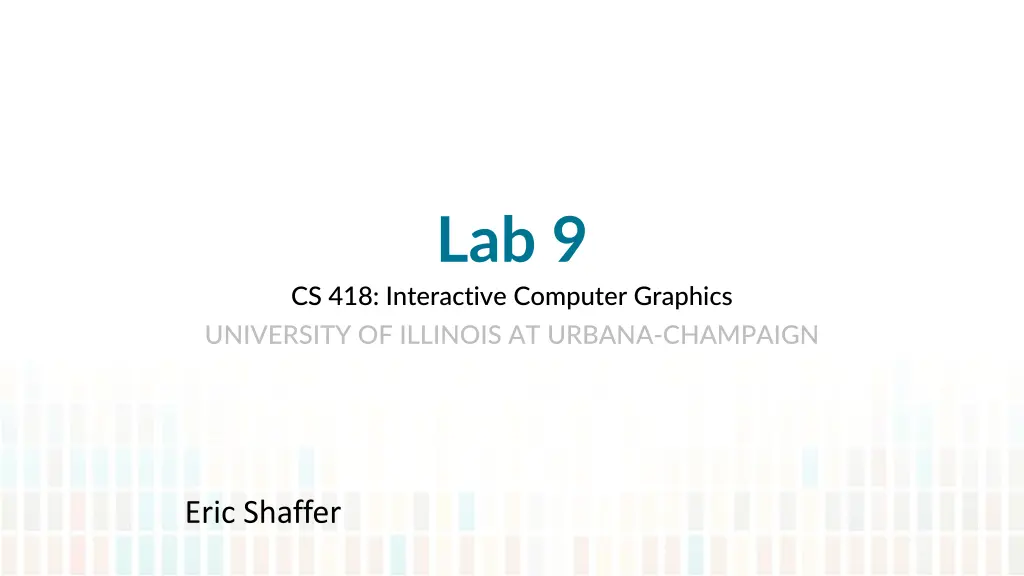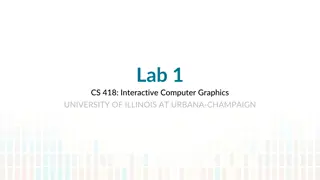
Learn Interactive Computer Graphics Techniques for MP3 Development
"Discover how to fetch images asynchronously, create Texture Cubes, and apply textures to spheres in Interactive Computer Graphics. Get insights on handling texture loading, setting up sphere buffers, and rendering spheres with textures. Enhance your skills for MP3 development at University of Illinois at Urbana-Champaign."
Download Presentation

Please find below an Image/Link to download the presentation.
The content on the website is provided AS IS for your information and personal use only. It may not be sold, licensed, or shared on other websites without obtaining consent from the author. If you encounter any issues during the download, it is possible that the publisher has removed the file from their server.
You are allowed to download the files provided on this website for personal or commercial use, subject to the condition that they are used lawfully. All files are the property of their respective owners.
The content on the website is provided AS IS for your information and personal use only. It may not be sold, licensed, or shared on other websites without obtaining consent from the author.
E N D
Presentation Transcript
Lab 9 CS 418: Interactive Computer Graphics UNIVERSITY OF ILLINOIS AT URBANA-CHAMPAIGN Eric Shaffer
Goals Things you will need to do include: Learn how to asynchronously fetch an image. Learn how to create a Texture Cube. Learn how to easily apply the Texture to a Sphere. All of this code will be useful for MP3.
Async Image File Loading. No Different from getting a Text File No need for parsing too! We need to get a Texture for each face of the Cube. How? What is the order of the requests?
function handleTextureLoaded(image, face) Called each time a texture has loaded. Have to assign each texture to the appropriate face. Start by binding the Texture Cube. Then, bind each face.
Every time a texture is loaded, increment the textures count. Bind the CubeMap. Check which face we have to fill. Set up the clamping and filtering.
function setupSphereBuffers What do we have to setup to render a sphere? Look in simpleModelling.js which function gives you a sphere? What arrays do you need for just the sphere? For lighting?
- - - - Get the Sphere from Subdivision. Create a buffer for vertices. Populate the buffer. Set the itemSize and numItems. - - - Create a buffer for the normals. Populate the buffer. Set the itemSize and numItems.
function drawSphere We have the vertices and normals. What do we have to do to render a sphere? How do we apply a texture?
Bind the Vertex Array to the Vertex Position Attribute. Bind the Normal Array to the Normal Position Attribute. Set the Texture to be used.
Vertex Shader Time. What do we have to do in the Vertex Shader?
Set the gl_Position. Also, send the vertexPosition and vertexNormal to the fragment shader.
Fragment Shader Time How do you sample a Texture Cube? Any ideas?
Sample the Cube using the normalized vertex position to map the Cube to the Sphere!

